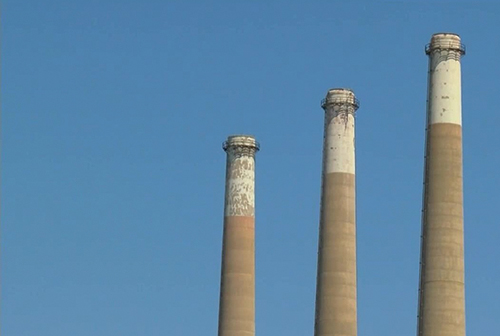The state agency charged with protecting public health at industrial sites has decided there isn’t enough pollution at the Morro Bay Power Plant to force cleanups at this time, but there could be future issues after the power plant and stacks are removed.
In its draft “Statement of Basis,” the State Department of Toxic Substances Control (DTSC) has analyzed eight “Areas of Concern” or AOCs at the 131-acre power plant property. The pollution found at one site so far, was over what would be considered the maximum levels of pollution (mostly hydrocarbons) to allow unfettered reuse of the property, i.e. use for residential housing.
Back in 2006, DTSC and Pacific Gas & Electric entered into a “Resource Conservation and Recovery Act — Corrective Action Consent Agreement,” that identified the AOCs. They are: AOC-1 is the former fuel oil tank farm; AOC-2 is the “beach valve” area; AOC-3 is Firehouse No.1; AOC-4 a storage area; AOC-5 the PG&E switchyard; AOC-6 is a multi-use area; AOC-7 is the power building; and AOC-8 is the waste metal cleaning ponds.
DTSC said they couldn’t at this time evaluate the soils under AOC-7 the power plant building until plant owners Vistra remove it, which they have pledged to do under an agreement with the City by 2028 or pay the City $3 million. The stacks are slated for removal, too.
AOC-8, the waste metals pond was already addressed back in 2008 with the Recovery Act process and the switchyard is still in operation and is expected to be far into the future, as there are now two proposed energy projects that want to use its access to the power grid.
AOC-1, the former tank farm, was the only spot that tested above the unrestricted reuse level but that roughly 22 acres is where Vistra proposes to build a 600-megawatt Battery Energy Storage System or BESS, and if approved and constructed would continue the industrial use on that spot for the 20-year lifespan of the BESS.
A Canadian energy company, Hydrostor, recently applied to the California Energy Commission to build a 400 MW energy storage and generation plant out in Chorro Valley at Hwy 1 and Canet Road and use the high voltage wires crossing Hwy 1 and the PG&E switchyard for its project.
The DTSC-PG&E agreement also placed a “land use covenant” or LUC (deed restriction) over the plant property that dictates what future uses are possible and who will be responsible for cleaning up any contamination that might be found if they want to redevelop beyond industrial uses.
“The LUC,” said a City report, “would not allow residential use on any of these AOCs and would require a soil management plan to verify that future soil use complies with commercial/industrial use at these AOCs. Also, groundwater would be restricted, not allowing potable or drinking uses. These restrictions require annual inspection and reporting that this remedy is still protective of human health and the environment.”
So even though the State has decided that any contaminants that might be there don’t need to be cleaned up, Vistra will be responsible for that ongoing monitoring.
DTSC is expected to finalize the work on the power plant sometime next year. After that the State and City will work to record the LUC with the County.
As for the future of the waterfront property, Vistra has said that it looks forward to working with the City on what redevelopments might be sought.



